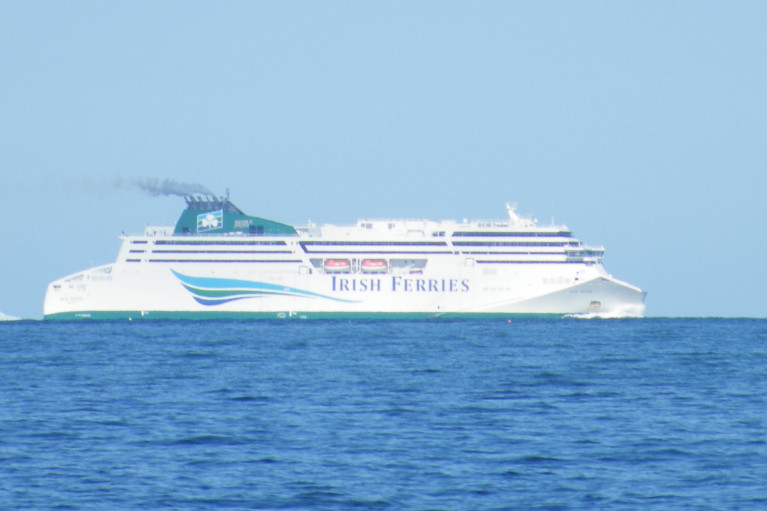W.B. Yeats, the largest ferry operating out of Dublin Port has switched from the Holyhead route to Dublin-Cherbourg due to the continued surge in freight demand on direct routes to France, writes Jehan Ashmore.
The 165 freight accompanied unit capacity Irish Ferries ship began the Ireland-mainland Europe route last week though the cruise ferry was originally scheduled to enter service but not until 25 May, marking the traditonally busier summer season.
Irish Ferries early redeployment of the larger lorry-driver cabin capacity W.B Yeats on the French route led to the transfer of the chartered ropax Epsilon to return on the Dublin-Holyhead route. The smaller ropax works in tandem with the cruise ferry Ulysses though passenger demand on the Irish Sea is low given this quiet time of the year coupled with Covid-19 restrictions. While rivals, Stena Line recently implemented temporarily a reduction in sailings as Afloat reported due to supply-chain issues.
The swap of vessels between these routes is no surprise given the surge in demand experienced in Rosslare Europort where rivals Stena Line prior to the festive season stepped up capacity also to Cherbourg that was due to begin last Monday.
In addition the launch by DFDS new Rosslare route to Dunkirk on 2nd January is another indicator of such freight demand. The level in haulage capacity is to increase yet further when Brittany Ferries in March will also connect the Wexford ferryport and Cherbourg.
The Normandy port is not only proving a convenient and strategic port for Irish haulage firms and other customers using three ferry operators, as Brittany Ferries recently reintroduced the freight-only ferry Cotentin but serving the UK.
After an absence of 7 years for the French operator, Cotentin's Stena Line Baltic Sea service ceased late last year with the freighter returning to English Channel service sailing on New Year's Day on the Cherbourg-Poole route.
Cotentin is back due to the UK Department for Transport's contract for extra freight capacity on routes to France following Brexit and the consequent termination of the free trade agreement with the EU.
In April, Barfleur the route's routine ferry resumes service and will offer passenger capacity too.































































